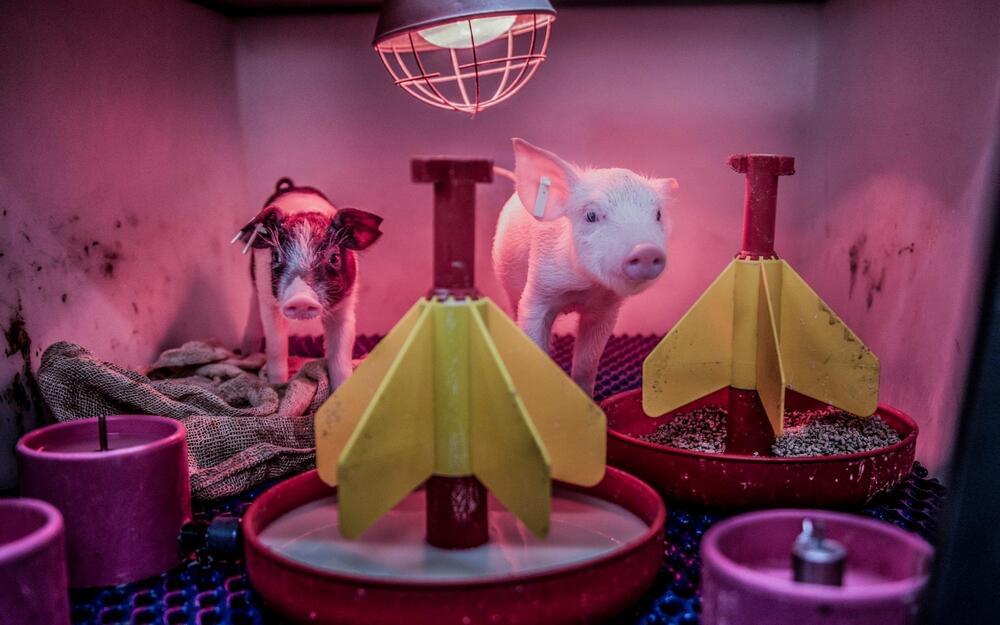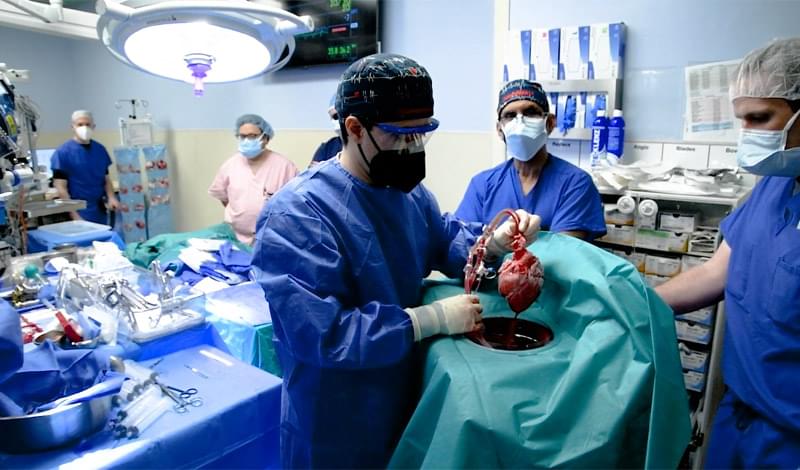A pig’s heart in a human? The bold frontier of xenotransplantation shows just how quickly medical science is evolving.


University of Utah engineers have built a robotic exoskeleton that gives people with prosthetic legs a power boost that makes walking less difficult.
“It’s equivalent to taking off a 26-pound backpack [while walking],” lead researcher Tommaso Lenzi said in a press release. “That is a really big improvement.”
The challenge: About 220,000 people in the U.S. have had above-knee amputations, meaning their leg was amputated somewhere between the knee and hip.
Excerpt from an interview made by James Ruhle, founder at Simple Biotech, to Michael (Mike) West, founder and CEO of AgeX Therapeutics.
During this 4 minute excerpt, Mike explains in a nutshell the work he and his team at AgeX are doing “to reverse the aging of cells and tissues in the body in the truest and fullest sense of the work”, and clarifies the reasons why it doesn’t mean to convert and adult into a child.
To watch the entire interview clic here: https://youtu.be/nv3DYGw5iVM

Join us on Patreon!
https://www.patreon.com/MichaelLustgartenPhD
To calculate biological age using Levine’s test, download the Excel file in this link from my website:

A team of researchers at the Institute of Computer Science and Random Systems has built a non-software-based virus detection system using a Raspberry Pi, an H-field probe and an oscilloscope to detect electromagnetic wave signatures of multiple types of viruses. The team presented its system and test results at last month’s ACM Machinery’s Annual Computer Security Applications Conference and published a paper describing their system on ACM’s Research Article page.
The idea behind the new system is that running software generates electromagnetic waves. And each piece of software generates its own unique wave patterns due to the way the software executes its code. The researchers took advantage of this knowledge and began using an H-field probe to capture wave patterns of known computer viruses running on various devices and viewed the results on an oscilloscope. They saw oscilloscope patterns that were unique to individual viruses as they were running. The researchers used that information to program a Raspberry Pi to identify data from the other two devices to recognize known virus wave patterns, using the system as a virus detector. To determine if a virus is running on a computer, IoT device or smartphone, a user places the H-field probe close enough to the device to read the electromagnetic waves that are generated. The Raspberry Pi then reports on whether it found any viruses, and if so, which ones.

A study published by researchers at the University of Illinois Chicago describes a new method for analyzing pyroptosis–the process of cell death that is usually caused by infections and results in excess inflammation in the body–and shows that process, long thought to be irreversible once initiated, can in fact be halted and controlled.
The discovery, which is reported in Nature Communications, means that scientists have a new way to study diseases that are related to malfunctioning cell death processes, like some cancers, and infections that can be complicated by out-of-control inflammation caused by the process. These infections include sepsis, for example, and acute respiratory distress syndrome, which is among the major complications of COVID-19 illness.
Pyroptosis is a series of biochemical reactions that uses gasdermin, a protein, to open large pores in the cell membrane and destabilize the cell. To understand more about this process, the UIC researchers designed an “optogenetic” gasdermin by genetically engineering the protein to respond to light.
“The cell death process plays an important role in the body, in both healthy states and unhealthy ones, but studying pyroptosis–which is a major type of cell death–has been challenging,” said Gary Mo, UIC assistant professor in the department of pharmacology and regenerative medicine and the department of biomedical engineering at the College of Medicine.
Mo said that methods to examine the pyroptosis mechanisms at play in live cells are difficult to control because they are initiated by unpredictable pathogens, which in turn have disparate effects in different cells and people.
“Our optogenetic gasdermin allowed us to skip over the unpredictable pathogen behavior and the variable cellular response because it mimics at the molecular level what happens in the cell once pyroptosis is initiated,” Mo said.
The researchers applied this tool and used florescent imaging technology to precisely activate gasdermin in cell experiments and observe the pores under various circumstances. They discovered that certain conditions, like specific concentrations of calcium ions, for example, triggered the pores to close within only tens of seconds.
This is a truly revolutionary technology that needs to be implemented all over.

When scientists discovered DNA
DNA, or deoxyribonucleic acid, is a molecule composed of two long strands of nucleotides that coil around each other to form a double helix. It is the hereditary material in humans and almost all other organisms that carries genetic instructions for development, functioning, growth, and reproduction. Nearly every cell in a person’s body has the same DNA. Most DNA is located in the cell nucleus (where it is called nuclear DNA), but a small amount of DNA can also be found in the mitochondria (where it is called mitochondrial DNA or mtDNA).

In fact, it’s not even the first time that IBM has tried — unsuccessfully — to unload the project, in yet another sign that corporate expectations for AI are continuing to crash into reality.
“Health care always is going to turn out to be more subtle, as well as more regulated for the right reasons, than it is in other areas,” IBM CEO Arvind Krishna said in an Axios and HBO interview last year. “And to me, that’s natural. It is a decision that may impact somebody’s life or death. You got to be more careful. So in health care, it turns out maybe we were too optimistic.”
The sale, if it actually goes through this time, would affect millions of patients and entire government healthcare strategies.